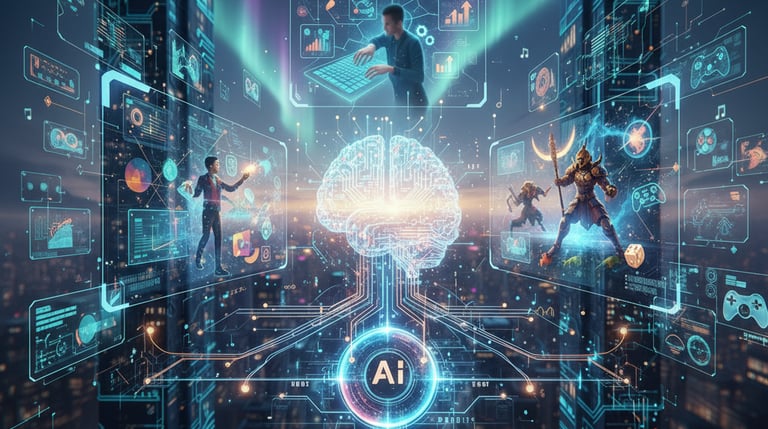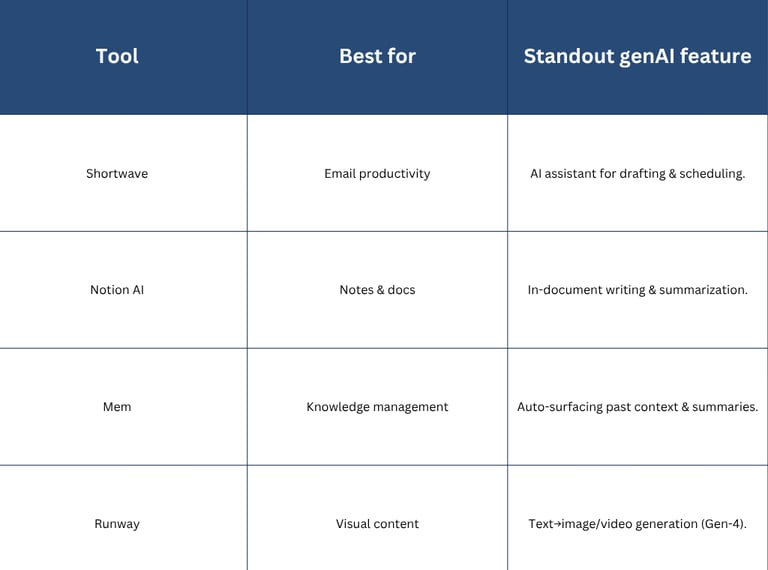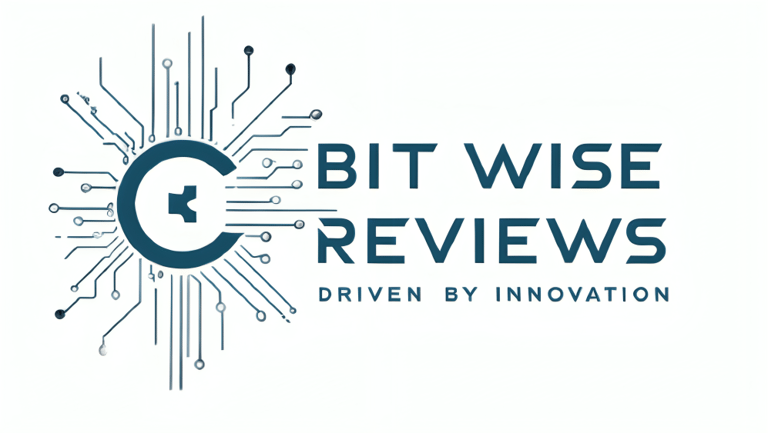Generative AI: How It’s Reshaping Creativity, Work & Gaming
Priyanshu- Bit Wise Reviews
11/24/2025


Introduction
Generative AI is blowing up right now across the tech world. Instead of sorting info, it makes fresh stuff - like words, pictures, clips, tunes, or software - when you give it a hint.
In this piece, I’m breaking down what generative AI means, exploring how apps such as Shortwave, Notion AI, Mem, and Runway put it to work - while sharing useful tips on using them without risk yet getting solid results.
What is Generative AI?
Generative AI refers to systems trained on big collections of info, yet they create fresh output similar to what they’ve seen. Instead of copying, these tools mix pieces in new ways - so results feel unique, even though based on past examples.
Microsoft says tools like GPT or mixed-media systems write, draw, make sounds, or build code by guessing what fits best after a cue - using clues from what’s already there.
The main point? These models don't just look at inputs - they make fresh stuff, bringing new ways to create or get things done.
Key Tools & Use Cases
Here’s how generative AI actually works in apps you likely use every day.
Shortwave: an email helper built for AI, crafting responses fast while sorting messages neatly through smart prompts. It digs into your inbox quickly, thanks to powerful language models. Saves tons of time dealing with daily emails, streamlining chores without the hassle.
Notion AI lives right in your workspace: giving a hand with drafting words, cutting info down, sparking ideas, or shifting thoughts into clear steps within pages. Great whether you're working alone or side by side with others.
Mem: A clever space for storing thoughts, sorting them automatically while highlighting useful connections through AI, kind of like a digital mind helper. Built mainly for people who work with ideas or make content.
Runway sticks to visuals: its Gen-4 tool turns text or sample pics into images and usable videos, helping solo devs and artists move faster without hassle. Instead of waiting ages, they get quick drafts ready for real use.
Also Read: Best Free AI Design Tools for Designers 2025
Main Comparison: Features at a Glance


Pros & Cons
Pros
Creativity on fast mode: get rough ideas, sketches, or mockups quickly. (Handy when you're rushing a game prototype during a jam.)
Work gets done faster: PwC found solid boosts in output once GenAI handles paperwork or repetitive jobs.
Lower barrier to entry: Non-experts can create convincing copy, images, or first-pass code.
Cons
Hallucinations happen when models make up info that sounds right but isn't true. Check every detail just to be sure.
Bias & safety: Results come from past data - so unfairness can slip in, or things might get misused.
Getting devs on board isn't always smooth - trust issues, shaky systems, or mismatched settings often slow things down.
Practical Tips & Responsible Use
Begin with tiny steps - try genAI for early versions, brainstorming, or mockups instead of polished releases. (Security guidance for generative AI by Google Cloud)
Check results - especially numbers, scripts, or official wording. See output as a teammate, not a know-it-all.
Stick to limits - turn on checks like filters or marks, also get people to look things over before sharing images or words.
Keep your info safe - check a tool’s privacy rules first if you’re putting private or delicate details into some outside system.
Try different prompts - good ones give better results; toss in limits, samples, or the vibe you want instead. (Research on prompting techniques and prompt engineering)
These steps cut risks while boosting results - no matter if you're drafting a post, creating game stuff, or setting up emails to run on their own.
Also Read: AI Explained: The Smart Revolution Driving Our World in 2025
Expert & Industry Insight
Microsoft says making generative AI work takes solid prep - picking the right model matters, then comes tracking performance while keeping rules clear. You can see this in Microsoft’s own guidance on monitoring generative AI applications
PwC looked into it - found real boosts in finance, marketing, and software; still, without solid oversight or skill-building, results might flop. While tools help output, learning the ropes and clear rules keep things on track. One doesn’t work well without the other, especially when change hits fast. Without training, even smart systems stumble. Rules aren’t red tape if they guide growth right.
Research says devs care about how well a tool works, plus whether it’s honest about what it can do - so design counts just as much as power. What matters is clarity in use, not just features under the hood.
Future Trends
Agents doing stuff instead of just typing: get ready for smarter helpers handling several tasks one after another.
Cross-modal setups: typing ideas could soon build stories, then pictures, followed by quick videos - all without hassle.
Better control: As tool creators team up with companies, they’ll focus on security, origin tracking, and watermark use - so people feel more confident.
Also Read: What are The Best Free Remote Collaboration Tools in 2025
Conclusion
Generative AI works well now, though it’s still improving. Apps such as Shortwave or Notion AI boost imagination and output - yet need careful handling plus real people watching closely.
I'm really into how these AI tools are changing, particularly because they're getting better fast - so much so that creative work feels easier now while also speeding up routine stuff along the way.
About The Author
Hey there! I’m Priyanshu, the founder and editor behind Bit Wise Reviews — a platform dedicated to making technology easy to understand for everyone.
I started this website with a simple idea:
“Tech doesn’t have to be complicated — it just needs to be explained the right way.”
INSIGHTS
Your go-to source for latest tech gadgets news
Support
Connect
© 2025. Bit Wise Reviews
+91 6377810443
Quick Links
